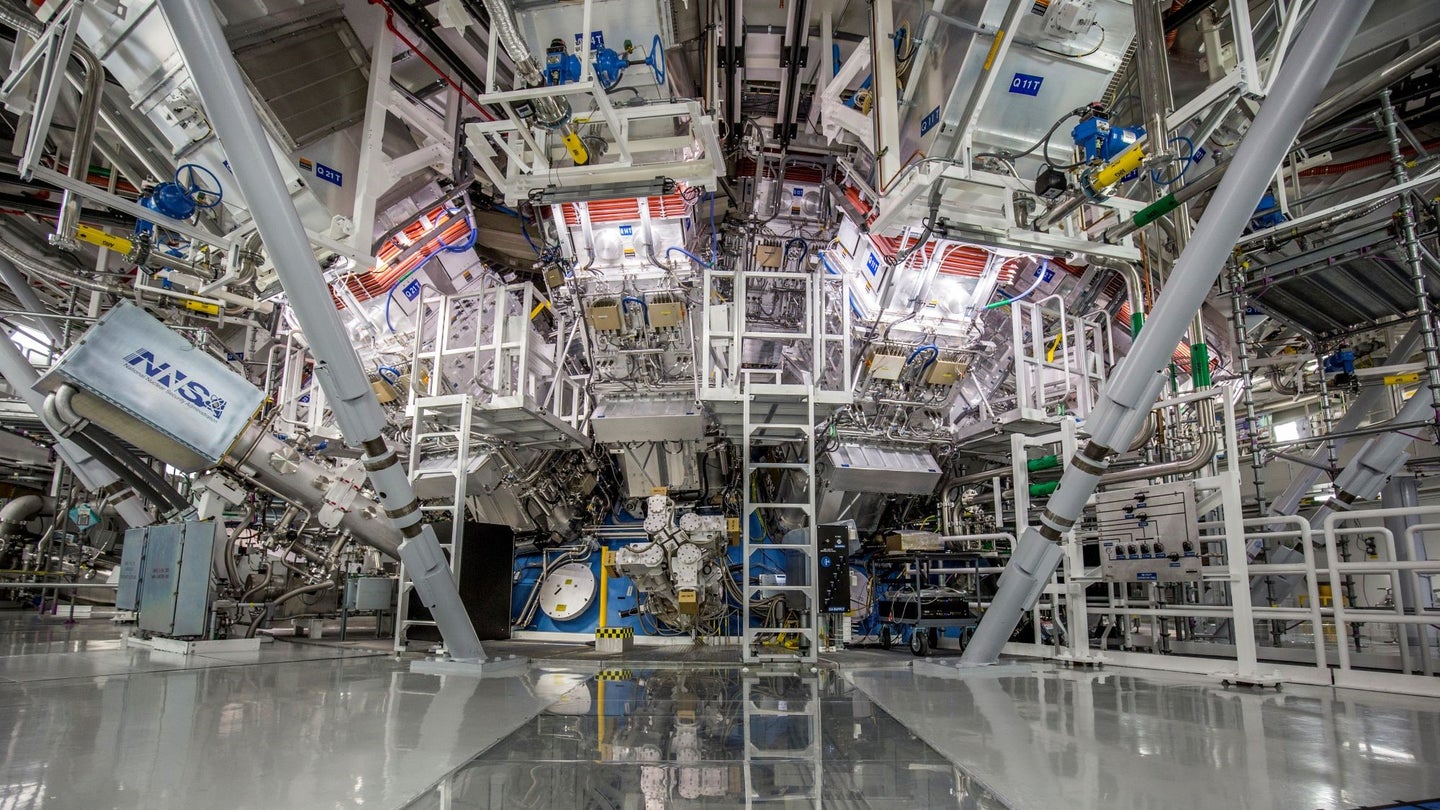
About eight months ago, scientists at a US-government-funded lab replicated the process that powers stars—nuclear fusion—and created more energy than they put in. Now, physicists and engineers at the same facility, the National Ignition Facility (NIF) at Northern California’s Lawrence Livermore National Laboratory, appear to have successfully created an energy-gaining fusion experiment for the second time.
NIF’s latest achievement is a step closer—the second step down a very long road—to a dream of fusion providing the world with clean, abundant energy. There is a long way to go before a fusion power plant opens in your city. But scientists are optimistic.
“It indicates that the scientists at [NIF] and their collaborators understand what happened back in December well enough that they have been able to make it happen again,” says John Pasley, a fusion scientist at York University in the UK who wasn’t part of this experiment.
NIF declined to comment, noting that the facility’s scientists had not yet formally presented their results. Until that happens, there’s a lot we won’t know about the specifics of the experiment, which took place on July 30.
There are multiple ways of achieving fusion, and NIF works with one, called inertial confinement fusion (ICF). In NIF’s setup, a high-powered laser beam splits into 192 smaller beams, showering a capsule that scientists call a hohlraum. Inside the hohlraum’s walls, this barrage spawns X-rays that crash into the capsule’s filling: a pellet of deuterium and tritium, super-squeezing it at temperatures and pressures more intense than the sun’s, initiating fusion.
The goal of all this work is to pass the break-even point and create more energy than the laser puts in: an achievement that fusion scientists call gain. In December’s experiment, 2.05 megajoules of laser beams elicited 3.15 megajoules of fusion energy. We won’t know for sure until NIF releases its data, but unnamed sources told the Financial Times that this second success created even greater gain.
[Related: Cold fusion is making a scientific comeback]
In addition, the December experiment achieved self-heating: a state where the fusion reaction powered itself, like a fire that no longer needs stoking. Many scientists think self-heating is a prerequisite to generating power in ICF. Outside scientists speculate that NIF’s new experiment also achieved self-heating.
“An obvious part of the scientific process is that you get the same result,” says Dennis Whyte, a fusion scientist at MIT who also wasn’t involved in the NIF research. “Of course, that’s extremely heartening.”
This is no small feat. ICF experiments are notoriously delicate. Very subtle changes to the lasers’ angles, to the shapes of the hohlraum and the pellet, and to any one of dozens of other factors could drastically alter the output. NIF in December barely scratched the surface of fusion gain, and it’s clear that tiny changes were the difference between passing break-even and not.
“We also repeat things, not just to see if they repeat, but also to see the sensitivities,” Whyte says. “Seeing the variability and the differences of those from experiment to experiment is really exciting.”
Since the 1950s fusion scientists have tried to accomplish what the NIF team has done, twice, in the past year. But the long-term goal is to turn these experimental forays into clean, cheap, abundant energy for the world’s people. Converting that milestone into a power plant is another quest entirely, and it has only just begun. If creating gain in the lab is like learning to light a fire, then using it to generate electricity is like building a steam engine.
“I would like to see them gradually shift some of their focus from demonstration of ignition and gain toward investigation of target designs that are closer to those which might be employed in a fusion power reactor,” Pasley says.
[Related: Microsoft thinks this startup can deliver on nuclear fusion by 2028]
To build a viable power plant, NIF will need to show greater gain. The December experiment created about 1.5 times as much energy as the NIF scientists put in. Even if the July experiment created two or three times as much energy, NIF won’t have come close to the gain that fusion scientists think is necessary for a viable power plant: some 100 times.
Gain of that magnitude would also make fusion a viable addition to the larger electrical grid. It’s difficult to understate the importance of NIF’s achievement, but the facility didn’t actually generate more energy than it took from the outside world. To power the laser that created those 3.15 megajoules, the device needed 300 megajoules from California’s grid.
NIF isn’t really the optimal place to complete this quest, partly because it was built to maintain the US nuclear weapons stockpile and can’t focus on fusion all the time. But for now, NIF will likely keep trying, running more and more laser shots. And scientists can compare the results with simulations to understand what is happening under the surface.
“What we assume is going to happen now is we’re going to get dozens of [runs], and we’re going to really learn a lot,” Whyte says.
The post How a US lab created energy with fusion—again appeared first on Popular Science.
Articles may contain affiliate links which enable us to share in the revenue of any purchases made.
from | Popular Science https://ift.tt/4lIUdte




0 Comments